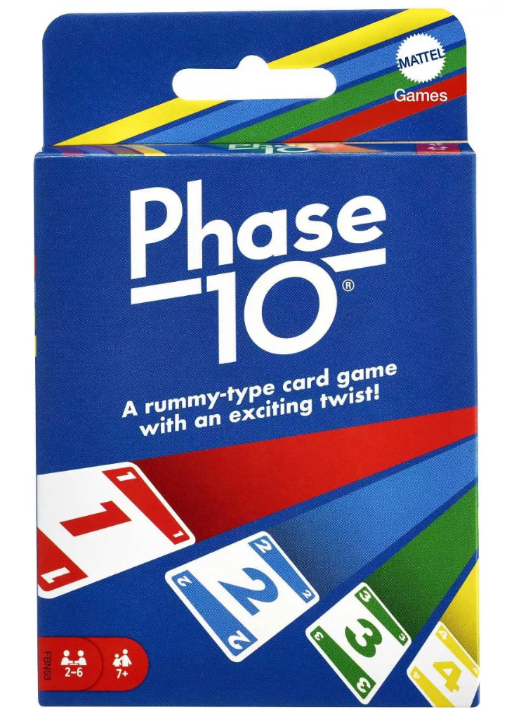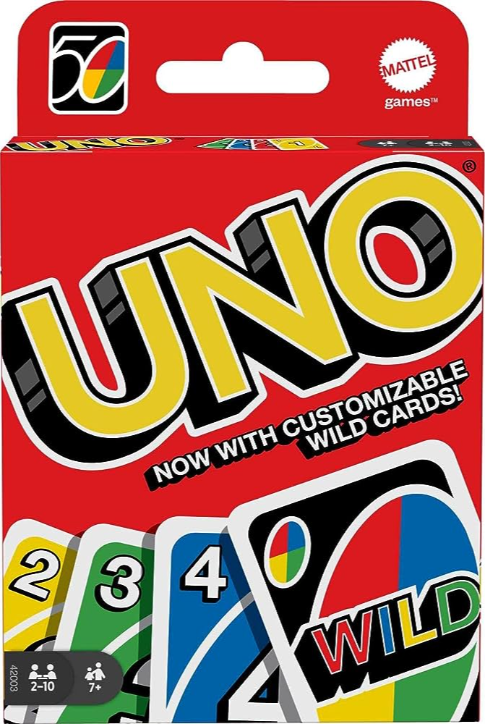Phase 10
Gameplay
Phase 10 is a card game based on a variant of rummy called contract rummy. Essentially, players compete to be the first to complete all ten phases. The phases are different combinations of cards composed of sets, runs, cards of one color, or a combination of these.
The game is played with a special deck consisting of 96 numbered cards (two of each value 1-12 in each of the four colors, 8 wild cards, 4 skip cards). If you don’t have the specific Phase 10 deck, you can play with two decks of regular cards: the suits can represent the four colors, kings can represent the wild cards, and jokers can represent the skip cards.
Sets: multiple cards of the same value
Runs: multiple cards in consecutive ascending order
The Phases:
- 2 sets of 3
- 1 set of 3 + 1 run of 4
- 1 set of 4 + 1 run of 4
- 1 run of 7
- 1 run of 9
- 1 run of 9
- 2 sets of 4
- 7 cards of one color
- 1 set of 5 + 1 set of 2
- 1 set of 5 + 1 set of 3
Each player starts with 10 cards, and the rest of the deck is placed face down between players to serve as the draw pile. The top card is flipped over and becomes the discard pile. During the first round, everyone is trying to complete Phase 1 by doing the following things:
- Drawing a card from either the draw pile or discard pile
- Laying out your completed phase (if possible)
- Hitting on other players’ phases once they have laid down their own phase
- Placing one card on the discard pile
Within in each hand, each player’s objective is to complete the current Phase they’re on, and then get rid of their cards by discarding to the discard pile or “hitting” on other players’ Phases. The first player to complete a Phase and get rid of their remaining cards wins the hand. All other players are given penalty points according to the value of their remaining cards.
Hitting
- Hitting on another player’s Phase is a way of getting rid of leftover cards after making a Phase. A hit is made by putting your card on top of a card in a phase that it already laid down, but you must complete your own Phase before doing so.
Phase Rules:
- Phases must be completed in order from 1 to 10
- Only one Phase may be made per hand; if a player successfully makes a Phase, then they can try and make the next Phase in the next hand
- A player does not have to win the hand to get credit for their Phase
Special Cards:
- Wild cards may be used in place of a number card and can be used as any color to complete any Phase. You can use more than one wild card in a Phase, as long as there’s at least one regular card
- Skip cards are used to cause other players to lose a turn. The player with the skip card simply discards the card whenever they would like to skip someone and chooses who should be skipped. You can’t skip the player that’s set to play immediately after you, and you can’t pick up a skip card once it’s been played.
Penalty Points:
- For every card remaining in players’ hands after one player goes out, they are awarded a certain number of penalty points.
- 5 points for each card 1-9
- 10 points for each card 10-12
- 15 points for a skip card
- 25 points for a wild card
- Penalty points are cumulative—points are added to your running total for every round you do not win
Winning
- To win the game, you must be the first person to complete all 10 Phases
- If two (or more) players complete all 10 Phases in the same round, the player with the lowest number of points wins
- In the event of a tie, the players that tied replay Phase 10 and the first to complete the phase and discard all their cards wins
History
Phase 10 was invented by Kenneth Johnson in 1982. After seeing the success of Uno, Ken set out to design a similar card game, and it took him only a few days to come up with it. Ken licensed the manufacturing and distribution rights of Phase 10 in 1987. It’s now licensed and produced exclusively by Mattel.
Ken lives in Southeast Michigan with his wife and son. He owns a number of other businesses, has been a guest speaker at inventor clubs, universities, civic organizations, and other institutions. He’s also written a book, The Simple Plan: Six Easy Steps To Make Millions From Your Ideas, with two more coming soon: From Scratch, his memoir, and Success By Thought.
Variations
There are a number of different variations that call for different Phases. For example, Phase 10 Cocoa Canyon calls for 7 cards of even or odd as one of the Phases, or Phase 10 Disco Fever, which calls for 8 even or odd of the same color as one of the Phases. In addition to these, there’s also different rules like the Anti-phase, which means you have to stay on your present Phase, and if you don’t, you must move down a Phase in the next round.
There’s also Phase 10 Masters. In this version, after a hand is dealt, players select the Phase they think they can complete, meaning you don’t have to complete the Phases in any specific order. It also allows for players to set aside one card per hand to be used to complete future Phases.
Phase 10 Twist brings in a game board. For every completed Phase, players can move one space around the board. However, if you land on the “Twist” space, players must make choices that offer big rewards or failure.
Phase 10 Handheld Electronic Game means you can play on your own, anywhere, and more recently, Mattel has made it into an app you can download onto your smartphone.
And finally, Phase 10 Dice Game eliminates the card element of the game and brings in 6 10-sided dice instead.
Reception & Awards
Phase 10 is sold in over 30 countries and is the 2nd best-selling card game in the world—it’s hard to top Uno! In 2012, Ken Johnson was nominated for a TAGIE award.
Related Blog
Recent Blogs
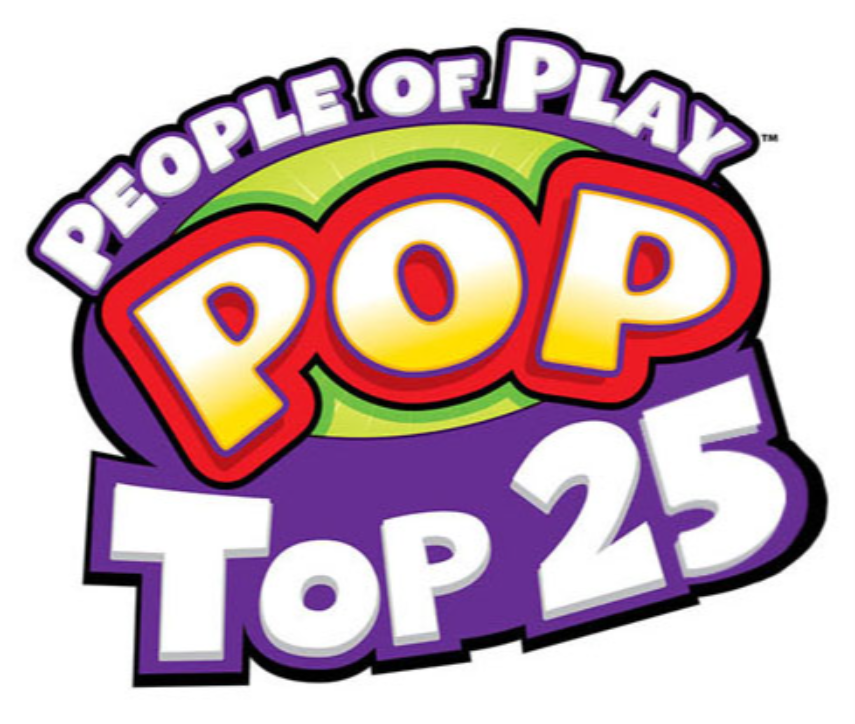
Industry Commentary, Op-Ed
The Top 25 POP Profiles of 2025

Biographies and Interviews
Ben Krenz Talks Moose Games, The Rise of Kidults, and More!

The Bloom Report
The Bloom Report Issue Archive
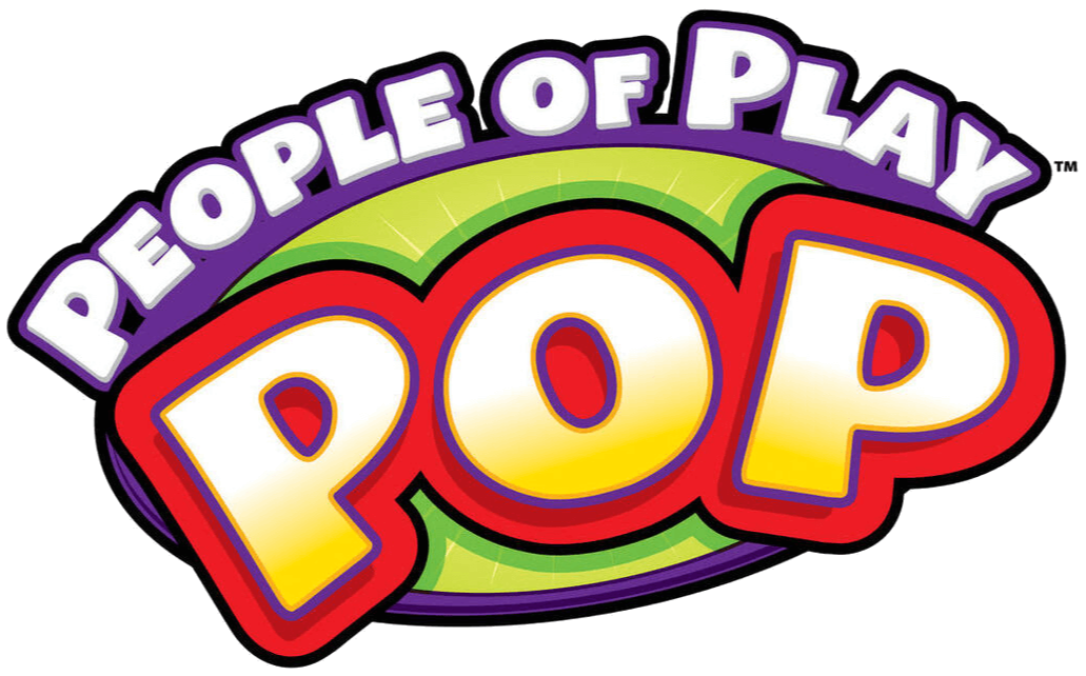
Play Through History
The Lives They Lived: Rest in Play Edition 2025

The Bloom Report
Toy and Game People Obituaries - RIP - Rest in Play
See more
Recent Wiki
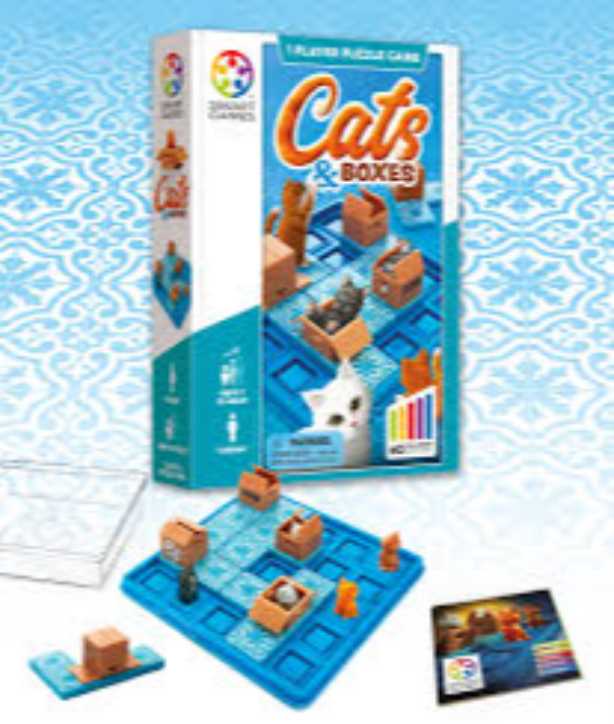
BOOK REVIEWS
Game Review: Cats & Boxes

PEOPLE
Ana Maria, Founder of The Magical Underland Inc., Rings in the Holidays with a new kind of Christmas Tree
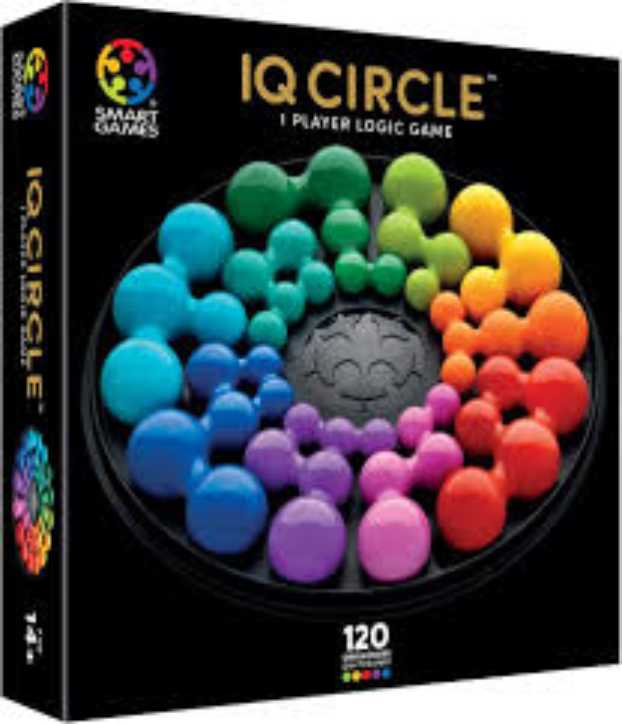
BOOK REVIEWS
Game Review: IQ Circle

PEOPLE
Catching up with Eric Olsen, The Inventor of Flip 7 and Co-Creator of Messy Table Games

BOOK REVIEWS
Book Review: Happytecture by Anna Devís & Daniel Rueda
See more
POP's Got Talent

POP Entertainment
Randy Klimpert Shares his Ukulele Collection

POP Entertainment
Steve Casino Peanut Art

POP Entertainment
Everyone's Talking about POP!

POP Entertainment
Princess Etch - a Multi-Talented Etch A Sketch Artist

POP Entertainment
Joseph Herscher of Joseph' s Machines.
See more
Recent POPcast

Hidden Role: The Brains Behind your Favorite Games
Connie Vogelmann designed Apiary & Wyrmspan!

Hidden Role: The Brains Behind your Favorite Games
Bob Fuhrer... Is THE Crocodile Dentist!

Hidden Role: The Brains Behind your Favorite Games
Tom Dusenberry... Bought Atari, Wizards of the Coast, and Avalon Hill!

Hidden Role: The Brains Behind your Favorite Games
Matt Leacock created Pandemic... the game!

Hidden Role: The Brains Behind your Favorite Games
Scott Brown and Tim Swindle... are Launching a New Sport!
See more
POPDuos

POPDuos: Interviews with Legends and Leaders
POPDuo: Richard Dickson, Mattel’s President & COO, and Kedar Narayan, Young Inventor Challenge AMB

POPDuos: Interviews with Legends and Leaders
POPDuo: Will Shortz and Josh Wardle

POPDuos: Legends and Leaders Explore Creativity
POP Duo: Elan Lee, Co-Founder, Exploding Kittens.and Jeff Probst, Host and Exec Producer, Survivor

POPDuos: Legends and Leaders Explore Creativity
POP Duo: David Fuhrer, MNG Director, Blue Sq Innovations & Shawn Green, past Dodgers & Mets MLB Star

POPDuos: Legends and Leaders Explore Creativity
POP Duo: Bob Fuhrer, Founder, Nextoy and Tom Fazio, Golf Course Designer
See more




